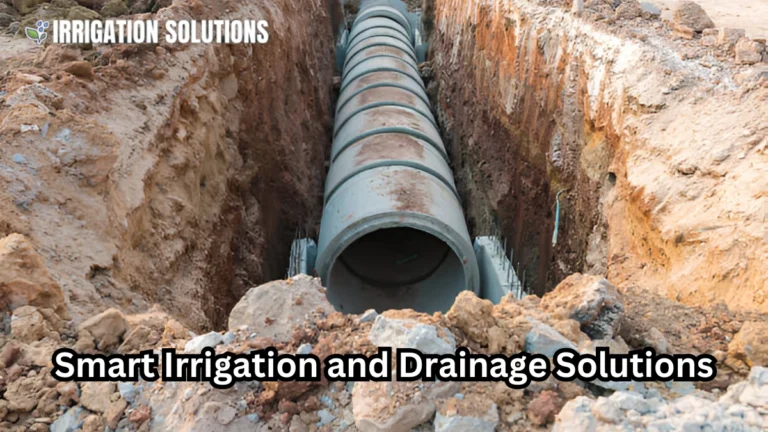Why Irrigation Medical Matters

Medical irrigation is a crucial procedure in healthcare, used to cleanse wounds, remove debris, and deliver medications effectively. From wound care to surgical procedures, irrigation plays a key role in preventing infections and promoting faster healing. This article explores the significance of irrigation in medicine, different techniques, best practices, and real-world applications.
What is Irrigation in Medicine?
In medical terms, irrigation refers to the controlled flushing of bodily tissues, wounds, or cavities with a fluid. It is commonly used to:
- Clean wounds and surgical sites
- Remove foreign objects and debris
- Deliver antiseptics, antibiotics, or medications
- Reduce the risk of infection
Common Fluids Used for Irrigation:
| Fluid Type | Primary Use |
| Normal Saline (0.9% NaCl) | General wound cleaning and hydration |
| Sterile Water | Rinsing and irrigation of delicate tissues |
| Antiseptic Solutions (e.g., Chlorhexidine) | Disinfection and infection control |
| Antibiotic Solutions | Targeted treatment of infected wounds |
| Lactated Ringer’s Solution | Used in trauma and surgical irrigation |
Applications of Medical Irrigation
Wound Irrigation
Wound irrigation is essential for removing bacteria and debris to prevent infection. A case study in the Journal of Emergency Medicine found that wound irrigation with high-pressure saline reduces infection rates by over 50% in contaminated wounds.
Best Practices for Wound Irrigation
- Use a sterile solution to avoid introducing bacteria.
- Apply adequate pressure (e.g., 8-15 psi) to dislodge debris.
- Ensure complete coverage of the wound area.
Quote from a Medical Professional:
“Effective wound irrigation is the first line of defense against infections. Proper technique can significantly improve healing outcomes.” Dr. Emily Carter, Trauma Surgeon
Bladder Irrigation
Bladder irrigation is performed to prevent blockages in catheters and treat bladder infections. It is commonly used in post surgical patients or those with urinary retention issues.
Types of Bladder Irrigation
- Continuous Bladder Irrigation (CBI): Used after bladder or prostate surgery to prevent blood clot formation.
- Intermittent Bladder Irrigation: Used for treating infections or clearing mucus buildup.
Ear and Eye Irrigation
- Ear Irrigation: Helps remove excessive earwax or foreign bodies. Performed using body temperature saline or water to prevent dizziness.
- Eye Irrigation: Used in chemical burns or foreign object removal. pH balanced solutions like Morgan Lens irrigation help neutralize acidic or alkaline substances.
Case Study: Chemical Eye Burns
A 2023 study in Ophthalmology Reports found that immediate eye irrigation within 10 minutes of exposure reduces permanent damage by up to 70%.
Surgical Irrigation
In surgeries, irrigation helps maintain clear surgical fields, reduce infection risks, and remove contaminants.
Examples of Surgical Irrigation Use:
- Orthopedic surgeries: Removes bacteria and bone debris.
- Abdominal surgeries: Prevents peritonitis by flushing the abdominal cavity.
- Dental procedures: Eliminates infection causing bacteria.
Best Practices for Medical Irrigation
Choosing the Right Solution
- Use isotonic solutions (like normal saline) to avoid tissue damage.
- Avoid tap water in deep or open wounds due to contamination risks.
Applying Correct Pressure
- Low-pressure irrigation (<8 psi) is used for delicate tissues like the eyes.
- High-pressure irrigation (8-15 psi) is ideal for infected wounds with debris.
Sterility and Infection Control
- Always use sterile equipment.
- Single-use syringes prevent cross contamination.
Challenges and Risks of Medical Irrigation
While irrigation is beneficial, improper techniques can cause complications.
| Risk | Cause |
| Tissue damage | Excessive pressure |
| Infection | Using non-sterile solutions |
| Electrolyte imbalance | Prolonged irrigation with improper fluids |
| Discomfort or pain | Incorrect temperature or fluid type |
Future Innovations in Medical Irrigation
Advancements in medical technology are improving irrigation techniques.
Emerging Trends:
- Automated irrigation systems: Used in surgeries to ensure consistent flow and sterility.
- Antibacterial irrigation solutions: Help prevent infections in chronic wounds.
- Smart irrigation catheters: Designed to monitor and adjust irrigation flow in real time.
Case Study: AI Assisted Surgical Irrigation
A recent trial at the Mayo Clinic tested AI controlled surgical irrigation systems that adjust flow based on real time bacterial detection. The results showed a 40% improvement in post surgical infection rates.
Conclusion
Medical irrigation is a vital technique across multiple healthcare fields, from wound care to surgery. Using the right solutions, techniques, and sterility measures ensures effective treatment and better patient outcomes. As technology advances, smart irrigation systems will further enhance the precision and safety of these procedures.
For healthcare professionals, mastering proper irrigation techniques is essential for infection control, improved healing, and enhanced patient care.






